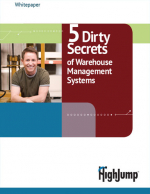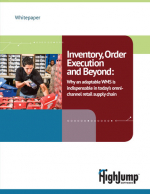Warehouse Management Systems for 3PL Providers
Third Party Logistics (3PL) providers make their living performing outsourced functions for their clients. They sell their clients on the value of focusing on one’s core competencies and leaving other functions to the experts.
In recent years that philosophy has shifted. The complexity of operating a third party logistics facility, particularly one that serves multiple clients, has accelerated. As new clients come on board, or existing clients put forth new requirements, 3PL’s must react quickly while protecting their own bottom line. More and more, 3PL’s have realized that building and maintaining mission critical IT systems can be a drain on company resources and instead are partnering with solution providers to enhance their IT capability. Bottom line…3PL’s are now practicing what they preach.
When selecting a Warehouse Management System (WMS), 3PL executives face a seemingly endless number of options. It’s undoubtedly a challenge to sift through all of these options and come to the right decision for their company. Arguably, the most important question to answer in this process is whether to select a solution that is purpose-built for their industry or to select one that has been retrofitted for a multi-client, 3PL environment. While this is clearly an important decision, one may ask… purpose-built versus retrofit… is this a trick question? Why would one ever consider a retrofit over something that is purpose-built? It’s not likely that you would be comfortable driving a car that was retrofi tted with a go-cart engine. However, as crazy as the question may sound, perhaps the following scenario can shed some light on its relevance and it may even hit close to home.
Your premier client, XYZ Corporation, has learned that you are in the market for a new WMS. In the spirit of collaboration, they provide some advice that will save you from having to go through the tedious process of a software selection. The WMS that is used in their own manufacturing DC’s also happens to have a version that can work in 3PL facilities. Their vendor has assured them that their base WMS has been enhanced to include multi-client capabilities and that the functionality can easily be “switched on.” And why not take advantage of the “seamless” integrations that would be present if both client and 3PL are on the “same” system?
While it may be tempting for a 3PL executive to succumb to the urgings of their largest client, it could very well turn out to be a disastrous decision. This white paper will outline the five business drivers that confirm the executive’s instinct… the only sound decision is to select a WMS that is purpose-built for their industry.
What’s Related




Favorites





